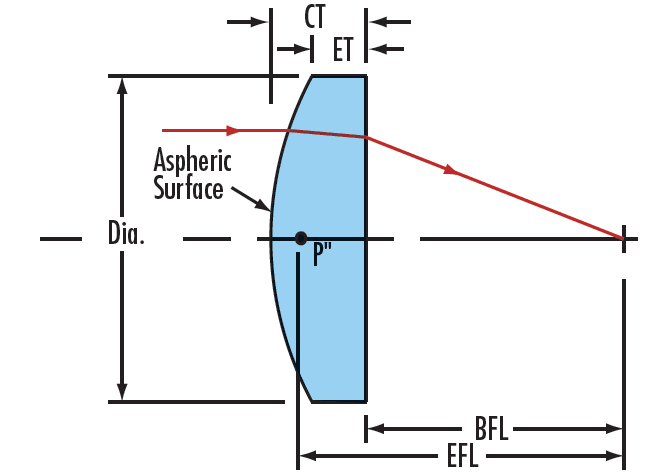
 TECHSPEC® ブランドの製品は、エドモンド・オプティクスによってデザイン、規格化、あるいは製造されます。もっと詳しく
TECHSPEC® ブランドの製品は、エドモンド・オプティクスによってデザイン、規格化、あるいは製造されます。もっと詳しく
TECHSPEC® ジンクセレン (ZnSe) 非球面レンズは、波長10.6µmのCO2 レーザーに対して回折限界の集光性能を実現するようデザインされています。10.6µmで<0.0005 cm-1の材料吸収しかないCoherent®社の赤外ZnSe材料から製造される本レンズは、未コート品の他、8~12µmで優れた透過率が得られる広帯域反射防止膜付きレンズをラインナップしています。その精密なデザインにより、レーザーシステム、サーマルイメージングアッセンブリ、及びFTIRデバイスへの実装に最適です。TECHSPEC ジンクセレン (ZnSe) 非球面レンズは、10.6µmでλ/20未満のイレギュラリティに、40-20の表面品質と50Å未満の面粗さで製造されます。
補足: II-VI社は現在Coherent社になっています。
ZnSeは有毒材料のため、取扱いには特にご注意ください。人体への影響を避けるためにも、取扱いの際は、ゴムか樹脂製グローブを常に着用ください。

1-800-363-1992
もしくは 現地オフィス一覧をご覧ください
クイック見積りツール
商品コードを入力して開始しましょう
Copyright 2025, エドモンド・オプティクス・ジャパン株式会社
[東京オフィス] 〒113-0021 東京都文京区本駒込2-29-24 パシフィックスクエア千石 4F
[秋田工場] 〒012-0801 秋田県湯沢市岩崎字壇ノ上3番地